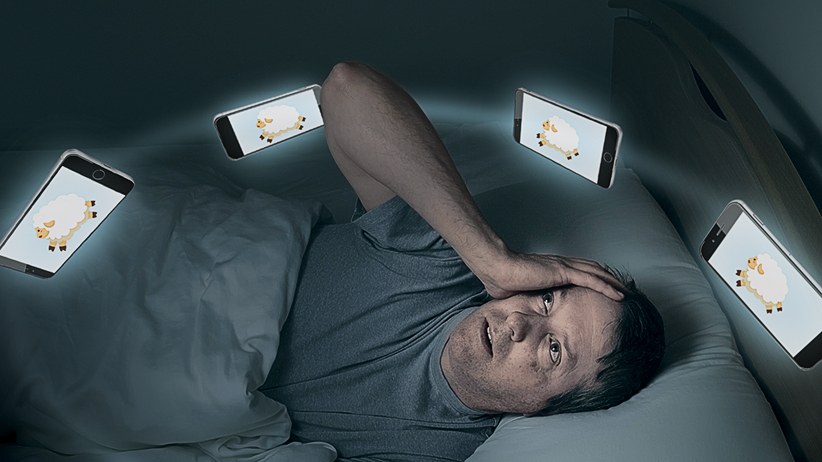Can’t sleep? Got $3,000? We can help.
Imagine a time when people just went to sleep and later on woke up. Suckers!
Share

Are you getting enough sleep? Are you sure? Experts warn that failing to get seven to eight hours can skew cholesterol, contribute to heart disease and lower immunity. Even worse, being awake exposes you to countless news features about how you should really be asleep.
But wait—don’t sleep too much! A study found that people who routinely sleep more than eight hours a night can suffer “reduced brain volume.” Their brains actually shrink! This was previously thought to occur only in the elderly and cable news viewers.
Slate has chronicled the risks faced by high school students, a majority of whom sleep less than they should. These teenagers are more likely to underperform at school, suffer depression, drink alcohol and get in car accidents. Oh, and their sleep habits now “raise their risk later in life for diabetes, cardiovascular disease and even Alzheimer’s.” (Whoever wrote this Slate article should definitely never deliver a commencement speech.)
Maybe that’s a little alarmist. Probably not every single child will die from waking up for school. But when it comes to sleep, panic is part of the culture. Sleeping is essential to your physical and mental health. SO WHY AREN’T YOU DOING IT BETTER, IDIOT??
Perhaps you have trouble getting to sleep. Not to worry. A quick scan of the Internet suggests a good night’s sleep is as easy as turning off the TV, shutting off your smartphone, pulling the blinds, clearing your mind and sitting motionless in a chair for six hours until bedtime. Piece of cake! (Note: Do not eat the piece of cake—you won’t be able to get to sleep.)
Looking for a shortcut? There are websites that promise to help you fall asleep in 10 minutes, or five, or three. One company sells a “sleep membership” that offers “cutting-edge sleep content.” We could probably look it up but let’s just agree to imagine what qualifies as “cutting-edge sleep content.” BREAKING: Horizontal sleeping is for squares—diagonal is in! And then there’s the pricey pillow that’s specially designed to allow for sleeping on both your side and back. You know, because traditional pillows are so structurally rigid.
These days, mattresses are marketed with phrases like “sleep system,” “2,000 body data points” and “pressure-sensing fabric.” Whereas back in the olden days, they were most commonly described as “a rectangle.” (To be fair, slumber habits were laughably primitive a generation ago. People would go to sleep and, later on, they’d wake up. Those suckers didn’t even know they could be spending much more money to do that.)
Today, all you need is a $3,000 mattress connected to WiFi. And an eye mask. And essential oils, a pillow stuffed with seaweed and eucalyptus leaves, a white-noise machine and a sleep journal. The journal is so you can write down details from your bed, such as, “I was kept awake by my children, who were mocking me for having a sleep journal.”
The latest advocate for better sleep is Arianna Huffington, who has been sharing some profound insights from her new book, The Sleep Revolution. This, for instance: “Pajamas can be part of your bedtime routine to signal to your brain that you’re ready to go to sleep.” Hang on, isn’t your brain the thing that told you to go to bed in the first place? I have never climbed between the sheets and had my brain go, “WHOA, WHAT IS HAPPENING??”
But what do I know? Young people today spend hours and hours researching their first mattress purchase. When I was in university, we employed a simple two-step selection process: How many pee stains is too many? And should we also take the couch next to it on the curb even though there is pretty clearly a raccoon living in it? Answers: three and duh.
Some of today’s high-tech beds “offer insights and make suggestions.” One designer claims his mattress can even stop people from having nightmares. How? By monitoring “core body temperature”—or something. It’s not really clear. What matters is that you a) believe it’s true and b) have $2,000.
Another site warns: “When shopping for an organic bed, it’s important to look into the organic content of each layer and material, as sometimes only part of the bed will be certified organic.”
Well, I guess we can live with non-organic springs—so long as they’re gluten-free. Now can you please show us your selection of vegan pillows?